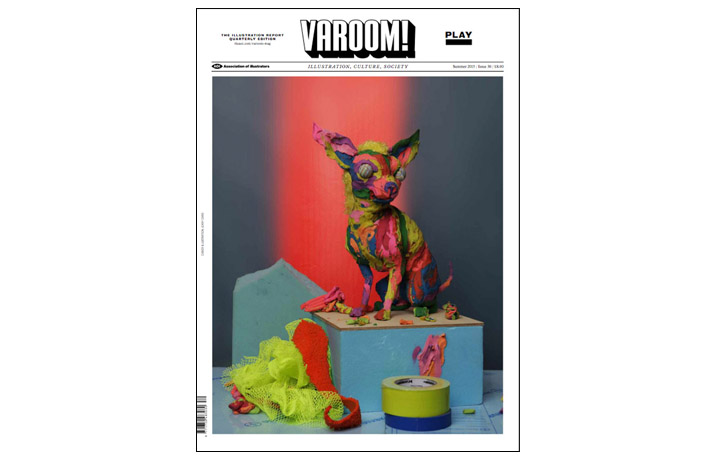Varoom 30 – Play: Inside the Sandbox
How does play help us create, asks Varoom 30? What memories of childhood play do we bring with us to our practice? What does playing do to us as creatives and in our everyday life?
Illustrators Marian Bantjes, Jennifer Maravillas, Kristi Minchin, Christoph Niemann and Steve Simpson step inside our imaginary sandbox and reflect on the value of Play. Here Varoom presents extracts from each of the artists’ interviews. From Brooklyn created from garbage, via carved squash to glittering broaches, it’s a playful exploration.
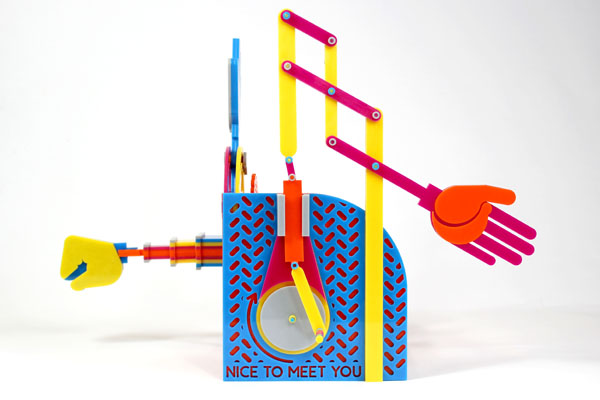
The Greeting Machine, Kristi Minchin, 2014. Perspex acrylic. A structure that has functions to ‘wave’, ‘fist bump’ and greet people in different ways
Varoom: Are you able to recall your childhood experiences of play and how do you play now? When you do play, does it feel like a guilty pleasure, not-grown-up, or a necessary dimension of your sense of self?
Kristi Minchin: Playing for me has always been about making, whether it was throwing around Play-doh when I was a toddler or building my dream house in a shoe box – I loved to create and if I saw something in my head that I couldn’t find in reality, then I’d want to make it. I don’t feel like that has really changed with age –my work now is a physical manifestation of ideas and daydreams that I want to share with people. I don’t feel like playing is necessarily reserved for the young, although I do sometimes wish I could go back into my eight year-old brain and pick it for concepts, I bet little me’s ideas would be way crazier!
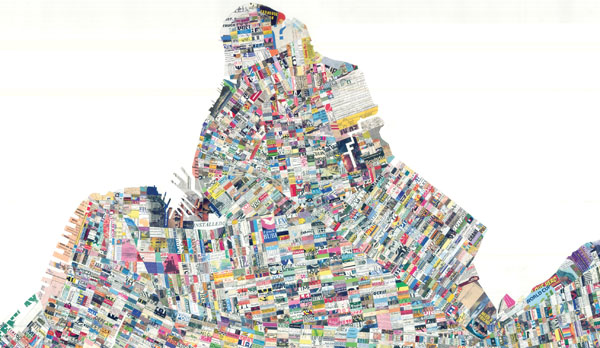
71 square miles (detail), Jennifer Maravillas, 2012-2015. Made from litter. Maravillas spent three years gathering garbage on the streets of Brooklyn and created this map with it
Varoom: How does play manifest itself in your creative process? Can you briefly take us through this?
Jennifer Maravillas: The thing that I most love about playing within my artistic process is that life is never the same when your process revolves around experimentation. My life and the world around me have become the medium.
For the last decade or so, my process has mostly involved going to new places on a weekly basis. With curiosity as the main motivation, I draw and photograph along the way everything I learn. These ideas, colours, and textures are then combined in various ways across my sketchbooks, larger and longer term works, and scanned into the computer for digital paintings. Knowing that I can use everything in some way liberates me from having any expectations. This catalogue I’ve been building includes portfolios reaching back to middle school.
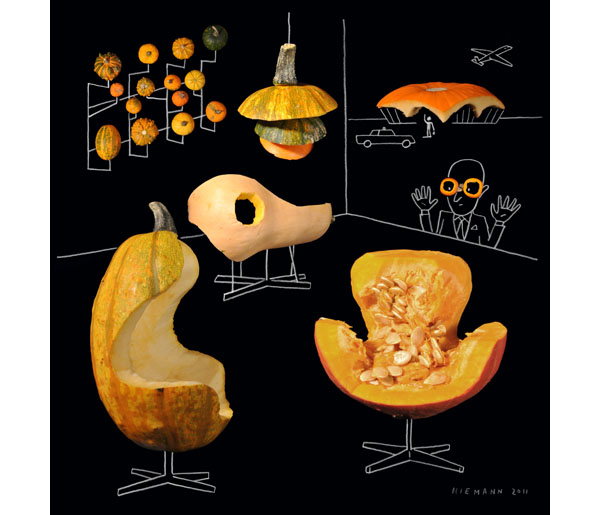
As Squash, Christoph Niemann for Abstract Sunday column published by The New York Times, 2011. Made from squash, photography. Representations of design classics
Varoom: How do you play now? When you do play, does it feel like a guilty pleasure, not-grown-up, or a necessary dimension of your sense of self?
Christoph Niemann: The question is always depending on the definition of play – doing something without a goal, without a sense of winning at the end. Playing cards for me is working without money. But playing in the sense of trying things out, I know this is a very necessary part of the creative process. Especially to come up with new things you have to be aimless and play around in order to find a chance, an unexpected result. If you work with a goal, it is really hard to find something on the side of the road. I really try to set time aside where I experiment, where I start walking a certain direction but the purpose is to walk and then look left and right if something interesting happens.
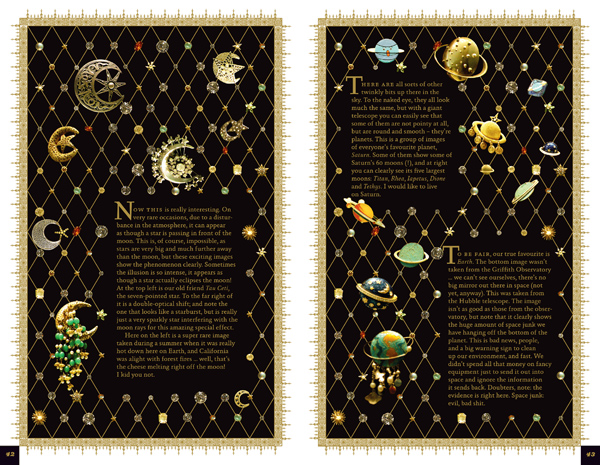
I Wonder, by Marian Bantjes, published by Thames & Hudson/ The Monacelli Press 2010
Varoom: Which of your works captures most your vision of play?
Marian Bantjes: In my book I Wonder, there is a piece called “The Sun, the Moon, the Stars.” It came out of a trip to the Griffiths Observatory in LA, where I went with the intention of writing a blog post about it, but was sidetracked by a long display of celestial-themed jewellery. I decided to write about the experience as though when you looked through the telescope, you saw this jewelery. I made all sorts of stuff up, and mixed fact with fiction. The writing is a bit silly, as my writing can sometimes be. The whole story is accompanied by a surround of jewellery, illustrating the words.
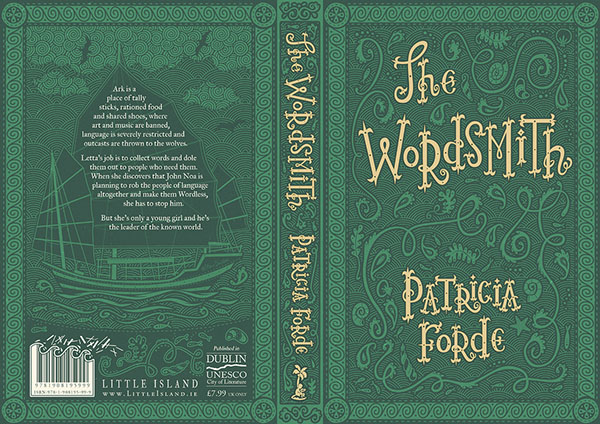
The Wordsmith by Patricia Forde, Steve Simpson, published by Little Island, 2015
Varoom: How does play manifest itself in your creative process? Can you briefly take us through this?
Steve Simpson: Most of my play happens around my sketchbooks that I carry everywhere with me and use every opportunity to scribble in. When I’m commissioned, clients expect a certain style/approach from me – there are certain parameters I need to work within, however the sketchbook allows and permits me to play around with style, mediums and approach – I can create purely for myself here. Being comfortable is important, getting the right seat (when on planes I pick my seat based on the direction of the overhead light) I like to have everything I’ll need around me before I start – being organised is very important. I enjoy improvisation too though, this has led to me finger painting with coffee or red wine on many occasions.
Varoom 30 – the Play issue can be purchased here
Back to News Page

